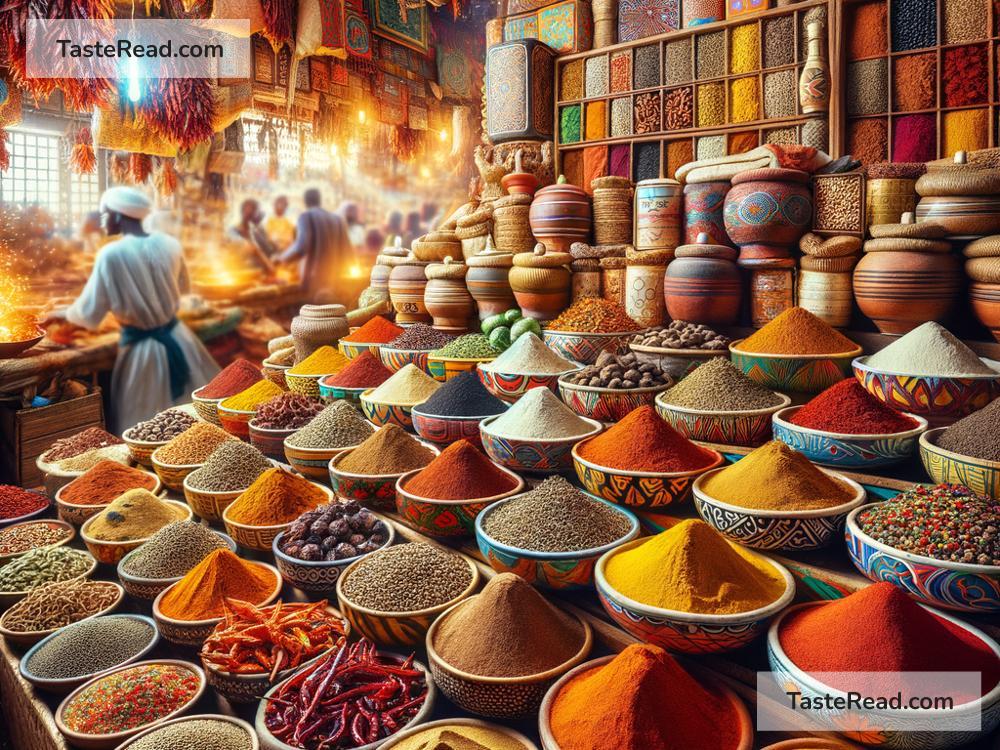The Influence of African Spices on Global Cuisine
Food isn’t just about nourishment—it tells stories, connects people, and shares history. Across the globe, flavors carry the traditions and cultures of those who created them. One of the richest histories of spices comes from Africa, a continent full of diversity in flavors, cultures, and landscapes. African spices have had a huge influence on global cuisine, leaving their mark on dishes everywhere. Today, we’re diving into how African spices have shaped the foods we eat and why they are so special.
A Flavorful Journey Through Africa
Africa is the second-largest continent in the world, and each region has its own unique flavor combinations. From the warm, smoky taste of North African spice blends to the fiery heat of West African peppers, African spices bring bold and unforgettable flavors. These spices were not only used to transform local dishes but were also traded across continents for centuries. Because of trade routes, colonial explorations, and migrations, African spices found their way into kitchens far beyond the continent’s shores.
African spices are known for their ability to create flavorful dishes without overpowering the original ingredients. They balance heat, sweetness, and earthiness, making every bite interesting. Some common African spices include berbere, harissa, spice blends like suya powder, and grains of paradise. Each of these spices tells a story about the region it comes from.
North Africa: A Culinary Crossroads
North African cuisine is influenced by Arab, Mediterranean, and African traditions. Spices like cumin, cinnamon, saffron, and coriander are commonly used to give dishes warmth and depth. One well-known North African spice blend is ras el hanout, which translates to “top of the shop.” It includes up to 30 spices in its mix, making it perfect for soups, stews, and roasted meats.
Another favorite is harissa, a chili paste made with garlic, olive oil, and spices like coriander and caraway. Harissa started in Tunisia, but today it has become popular worldwide as a condiment or marinade for vegetables and meats. These spices have made their way into Middle Eastern, European, and American kitchens, adding African-inspired flavors to everything from pasta sauces to sandwiches.
West Africa: Bold and Fiery Flavors
West African cuisine is known for its bold flavors, where chili peppers take center stage. Peppers like scotch bonnets, combined with ginger or garlic, create spice blends like suya powder, a mix of peanuts, chili, paprika, and more. Suya is a street food favorite—grilled meat coated in the spice blend. It’s not just popular in African households; it’s gaining fame worldwide.
Another spice with African roots is grains of paradise, often referred to as “African pepper.” It’s similar to black pepper but with hints of citrus and a warm spiciness. Once used heavily in medieval European cooking, grains of paradise are seeing a revival today among chefs and home cooks.
West African spices and cooking techniques have influenced cuisines like Caribbean food, where spicy stews and grilled dishes mirror African traditions.
East Africa: Subtle and Aromatic
East African food is gentler in spice but rich in aroma. Due to trade with India and the Middle East, East African cuisine incorporates spices like turmeric, cardamom, and cloves. These spices are often used in dishes like pilau, a spiced rice dish similar to biryani. Another signature spice from East Africa is berbere, a complex mix including chili powder, fenugreek, and cinnamon. This spice blend is the backbone of Ethiopian cuisine, used in their famous stew called doro wat.
East African spices also influenced the dishes of countries like India, where Swahili trading brought African ideas into Indian cooking. Today, you might find traces of African spice combinations in Indian curries.
South Africa: The Spice Route Runs Deep
South Africa’s cuisine is influenced heavily by centuries of immigration, including influences from Dutch, Malay, and Indian cultures. The famous South African spice mix is masala, inspired by Indian masalas. Cape Malay curry is a dish steeped in African and Indian flavors, mixing turmeric, cinnamon, and cloves to create a mild but tasty curry.
South Africa is also known for braais (barbecues). Barbecue rubs and marinades often blend African spices with global ones, creating unique flavors that can now be found in other parts of the world.
African Spices in Modern Global Cuisine
Today, African spices are becoming more appreciated globally. Chefs in Europe, America, and Asia are experimenting with African spice blends to craft new recipes. For instance, berbere might be used to season grilled vegetables or sprinkled over popcorn. Harissa can be added to pasta sauce for extra heat and flavor. These spices are versatile and bring unique profiles to dishes, making cooking more exciting.
Restaurants around the world now feature African-inspired menus. Popular chefs are showcasing African spices in new ways, blending them with techniques from French, Italian, or Japanese cuisines. Online spice shops are making African ingredients easier to access, encouraging home cooks to explore African flavors in their own kitchen.
Celebrating Africa Through Spices
African spices remind us of the continent’s rich culture, history, and connection with the world. They’ve traveled across oceans, become part of new traditions, and added depth to dishes from every corner of the globe. Exploring African spices is not just about trying new flavors—it’s also about celebrating the contributions of African culture to the global food scene.
Next time you enjoy a flavorful stew, a spicy dish, or a seasoned piece of grilled meat, think about how the spices in the dish have traveled through history. African spices are more than ingredients—they are storytellers, sharing the vibrant heritage of Africa with the world. So, grab some berbere or harissa, and take your cooking on a flavorful journey through Africa and beyond!


